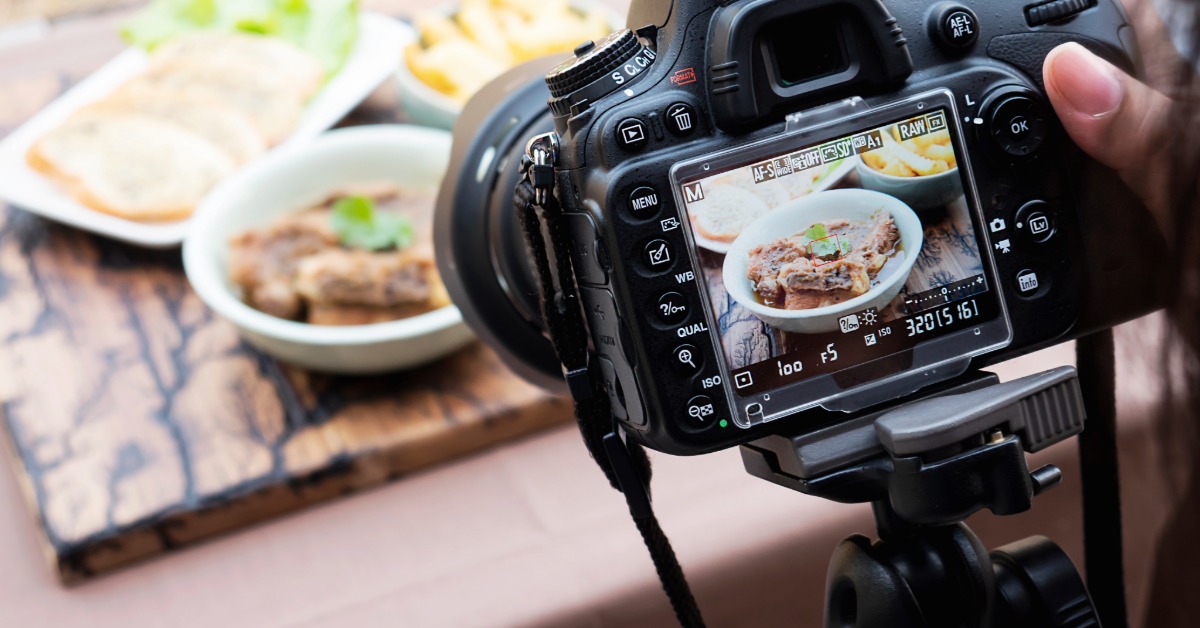Photography has long stopped being “just art.” In 2025, it’s a real, established profession with a clear funnel: portfolio, first clients, sales system, and scaling. The only thing that matters is choosing your path and mastering it. Below are seven proven directions in photography. You don’t have to jump into all of them at once: start with one or two, build results, and then add the next.
For each method, I explain what to sell, how to get started, how to build value and pricing—and most importantly, I share a real-life story: who has already done it and what they relied on.

Private Photoshoots: Portraits, Weddings, Family, Events
What you sell. Emotions and memories. Individual portraits, love stories, family sessions, graduations and weddings, baptisms, birthdays, and themed mini-shoots for holidays.
How to get started.
Put together 12–20 strong shots for each type of session and organize them into 2–3 themed series on a website (or at least a well-curated Highlight on Instagram).
Create simple packages: “Light / Standard / Premium” (duration, number of photos, prints/photobook).
Offer a “fast delivery” option: 10 edited photos within 24–48 hours. Clients love it, and it instantly gives you an edge over those who deliver in 2–3 weeks or even a month.
Your first leads can come from local chats, parenting communities, announcements in studios, or collaborations with makeup artists and stylists.
How to set your price.
Don’t undercut—add value instead (location, makeup, stylist, prints).
For weddings, the path to a six-figure annual income is realistic if you position yourself right and expand services (video, “day-after” shoots, love stories, prints). A telling case is Craig Peterman, a photographer who built a sustainable six-figure income by leveraging portfolio work, marketing, and adding videography. He attracted clients through Google Ads, social media, and wedding catalogs like The Knot.

Commercial Photography for Business: Brands, E-commerce, Restaurants
What you sell. Business solutions: conversion, average check size, brand or venue recognition. Here you’re shooting product photography for online stores and catalogs, corporate portraits, interiors, event coverage, and content for social media.
How to get started.
Build 2–3 niche portfolios: “e-commerce/product,” “food/restaurants,” “brand/team,” and include your best work.
Pitch retainers (monthly content packages) instead of one-off shoots. For example, a restaurant might pay a fixed monthly fee for you to regularly refresh their photo content.
Use licensing: charge not only for production but also for usage rights (duration/territory/media). This way, if a client pays for rights transfer, they can use the photos however they want.

Stock Photography: Passive Income That Grows with Your Portfolio
What you sell. Licenses for images (photos, vectors, videos, editorial, and even AI-generated visuals on some platforms).
How to get started.
Choose 2–3 platforms and upload consistently—don’t spread yourself too thin.
Work on metadata (titles, descriptions, keywords)—it’s half the game. Even the most brilliant photo won’t sell with irrelevant metadata.
Discipline beats genius: upload consistency directly correlates with income—that’s the unspoken rule of this market.
The most famous example is Yuri Arcurs, who built a “microstock factory” with millions of sales. It’s a reminder of the power of systems and scale. Beginners with just a few hundred files often see only a few dollars, while growth really starts when you hit thousands of high-quality, in-demand images.
Why many highlight Adobe Stock today.
Besides regular royalties, Adobe pays bonuses for Firefly training (payouts happened in 2024; in 2025 the rules and thresholds have been announced), and contributors can also earn money by having content included in the Free Collection.
Where to learn more about the platforms themselves.
A detailed breakdown of the top 5 platforms, with personal insights on royalties, the free collection, AI bonuses, and payout thresholds, is in this article: https://www.tagwithai.com/blog/five-best-websites-to-sell-photos/

NFTs and Digital Photo Art
What you sell. Unique tokenized versions of photographs, often tied to a story and a community around the series. It doesn’t work for everyone or all the time—but successful cases have already made history.
For example, photographer Justin Aversano and his Twin Flames series: in 2021, one of the lots (NFT + print) sold at Christie’s for ~$1.1 million, marking a milestone for photo-NFTs. That scale is rare, but it shows the format’s potential.
Even “meme” photographs (like Disaster Girl) sold as NFTs for hundreds of thousands of dollars—becoming cultural phenomena at the intersection of photography, internet history, and collecting.
Keep in mind the NFT market is volatile: 2021–2022 were unusually hot years, while 2023–2025 have been far more selective. Focus on artistic value and uniqueness, otherwise breaking through will be very difficult.

Teaching: Courses, Workshops, Mentorship
What you sell. Experience, systems, and a path that saves students months of trial and error—from camera setup to building a business. This makes sense only if you already have at least a couple of years of shooting experience and a solid portfolio.
How to get started.
Choose a narrow niche: “lighting and composition for portraits,” “food photography for cafés,” “stocks from scratch,” “skin retouching without plastic,” etc.
Start with a micro-product (a 2–3 hour webinar or intensive), gather feedback, then package it into a larger course.
Warm up your audience with free guides, checklists, portfolio reviews—this builds trust in you, and that directly affects sales results.
A bright example is Jenna Kutcher. She went from buying a Craigslist camera for $300 to building a seven-figure business on her personal brand and education. She turned from photographer to entrepreneur-mentor, proving the power of combining expertise with teaching.

Freelance Platforms: Remote Work and Hybrid Services
What you sell. Everything that can be done remotely: retouching, color correction, stock curation, catalog editing, preparing landing visuals, visual consulting, and in some cases full “turnkey” shoots in your city for remote clients.
How to get started.
In your portfolio, include before/after examples (retouch), case studies like “before → after,” and clear packages.
When applying for jobs, be specific: study the client’s problem and use their language. Your goal is to show that you understand their request and can offer solutions.
Don’t undercut your prices, but keep your niche narrow (e.g., “jewelry retouching,” “catalog photos for Etsy/POD,” “food content for cafés”).
On Upwork’s own list of well-paid freelance roles, photography shows up with a benchmark of $25–45/hour. That’s not the ceiling, but it’s a workable entry range. At the same time, Reddit discussions reveal a mixed bag of experiences: some get steady projects, others see stagnant traffic, and some get only sporadic gigs from Fiverr/Upwork. The lesson: don’t rely solely on platforms—grow your personal brand and find clients through social media too.

Prints and Photo Books: A Tangible Product People Love to Hold
What you sell. Posters and prints, series for interiors, photo books for families/weddings/graduations, small runs for local exhibitions and markets.
How to get started.
A proven set: 6–12 images in a series (same style), 2–3 size options, simple “all inclusive” pricing (print + shipping).
Photobooks as an upsell for private and wedding shoots.
Be realistic about online demand: prints sell best when you already have an audience (social media, YouTube, local exhibitions/markets).
The photo book and album market is alive and moderately growing—the forecast from 2025 to 2032 is a steady ~5% CAGR, confirming the demand for printed products. This is a good signal to add photobooks as a must-have upsell.
Personal reports from photographers (for example, Backyardsilver) show that print income can fluctuate wildly month to month: sometimes just a few dollars, sometimes $1.5k+ if traffic or timing hits. That’s a reminder not to rely solely on prints but to keep them as an additional revenue stream.

A 90-Day Action Plan (If You Start Today)
Week 1–2. Pick 2 directions (say, “Private Shoots” + “B2B for cafés”). Build portfolio series, package your offers, calculate costs.
Week 3–4. Set up lead generation: 20 warm contacts (personal reach-outs, local chats), 5 direct proposals to businesses, 2 mini-shoots “for a review” in your niche.
Week 5–8. Fulfill first orders, polish your content, set up retainer rails (monthly content plan for a client), and start preparing a webinar/mini-course on your strongest skill.
Week 9–12. Scale what works: secure 1–2 retainers, adjust your pricing, add upsells (prints/photobooks), and in parallel upload 100–200 solid stock images in one theme.
And Finally—About “Safety Nets” and a Sober Perspective
Photography is not a lottery. It’s craft, process, and the psychology of selling. Some paths are fast (private shoots in the right environment), some are slow (stocks), some are volatile (NFTs, prints without an audience). Those six-figure stories are inspiring, but they’re always about systems and positioning, not about some “secret button.”
Build your own set of directions, lock your actions into a calendar, and add one tool each month. A year from now you won’t have a “checkerboard of hopes,” but a portfolio of income streams—stable, predictable, and yours.




